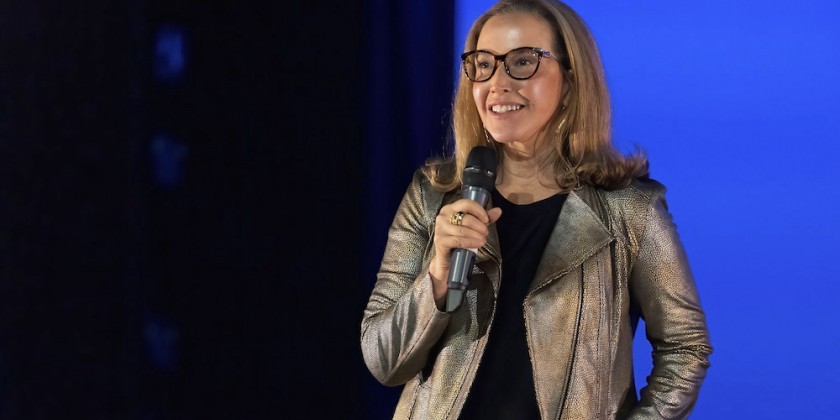Dance: Broadway Stage and Screen - Considering Jack Cole

Jack Cole The Camera’s Eye, and the Space of the Soundstage
Starting January 20th and running through February 4th at The Museum of Modern Art, New Yorkers will be able to discover or re-discover the innovations of Hollywood choreographer Jack Cole, referred to as one of the most influential figures in 20th Century dance. “All That Jack (Cole)”, a film retrospective organized by Dave Kehr, adjunct curator of the film department at MoMA, with Debra Levine, independent curator, dance critic, lecturer, and specialist in the choreography of Jack Cole, seeks to acknowledge Cole’s unique contributions to the Hollywood movie-musical canon and his pioneering efforts in the jazz-dance genre, paving the way for Bob Fosse and others. Through screenings, illustrated lectures and interviews, the 18-film retrospective offers a critical reappraisal of films in which splendid Jack Cole numbers, performed by his stellar dancers, are the vivid highlight.
Debra Levine will deliver a talk on Cole as part of the retrospective on January 23th, with guest dancer Carmen de Lavallade, ( to be repeated January 25, with guest dancer/choreographer, Grover Dale.) For info and tickets regarding Levine's talks, click here.
*article reprinted from Debra Levine's blog artsmeme
Professor-Emerita Emma Lewis Thomas, who knew Jack Cole as a fellow UCLA dance instructor, wrote an email, “Cole was adept at using SPACE captured by the camera…he was able to push perspective further than any choreographer of his day, without 3-D glasses.”
Lew put into words what I respond to so viscerally when I watch Cole’s dance sequences. Jack Cole aggressively advanced the art of choreography on film. This he did, I believe by instinct — that is, sheer talent — and not by design.

Astaire’s great breakthrough was the medium shot which includes the dancer’s full body in every frame. Gene Kelly adhered to this paradigm. But Cole took off the gloves, ripping into his canvas — cinema’s rectangle. A creature of the atomic age, he fissured it like an A-bomb, a Pollack painting. He splintered the screen, etching it with set design, costume, and choreography. Into a placid box he dappled dance activity from all sides. No space, or level, in the frame went unused by Cole.
Thus Cole moved far beyond Hollywood’s centered (and boring) way of presenting dance on film. His inside/outside, front stage/back stage camera work in the “Ladies in Waiting” sequence of Les Girls (MGM 1957, dir: George Cukor) remains thrilling and radical.
Cole yanks the viewer’s eye away from the initial orientation (watching three women perform on a stage) to the opposite perspective, i.e., the focus flips — we now look upon the audience from the dancers’ perspective. Stage lights glare in our eyes. The camera then relocates backstage, and we peer on the dancing women from the vantage point of the wing. Finally, the women, exiting the stage, physically burst into the camera’s space (backstage). It’s a dazzling, surreal, off-balance tour — much like what it is to perform.

Cole goes farther. He includes a mirror in his set decoration; one hangs on the theater wall. There you see the performance reflected. When you consider that “Les Girls” was inspired by Rashomon, well, you begin to suss what a genius Jack Cole was. Has any single film critic ever even noticed this sequence?

Also in “Ladies in Waiting”:
- Witty choreography using physical humor to illustrate Porter’s hilarious and dirty lyrics
- Stellar costumes that garnered an Academy Award for Orry-Kelly (and I’m sure Cole had huge input on them)
- Plot advancement through dance, in which the Taina Elg character dissolves into depression anticipating a suicide attempt
- Performances in which Cole brought non-dancer, Kay Kendall, to the level of her partners Taina Elg, a ballerina, and the great Mitzi Gaynor
Every element gets an A++. Every dance instinct is smart and correct.
Finally, to my eye, “Ladies in Waiting” prefigured Bob Fosse’s circling camera work in Cabaret, although it pre-dates Cabaret by 15 years. Fosse won an Academy Award for direction of Cabaret in 1973. Jack Cole died, by and large forgotten, in 1974. A principle lesson, lest we forget, that there’s "no business like show business."
What is an Enthusiastic Event?
Click here to learn about the The Dance Enthusiast's Enthusiastic Event Series!, providing audiences with the unique opportunity to travel into the heart of the dance world and meet the fascinating creative innovators of our city.
Share Your Audience Review. Your Words Are Valuable to Dance.
Are you going to see this show, or have you seen it? Share "your" review here on The Dance Enthusiast. Your words are valuable. They help artists, educate audiences, and support the dance field in general. There is no need to be a professional critic. Just click through to our Audience Review Section and you will have the option to write free-form, or answer our helpful Enthusiast Review Questionnaire, or if you feel creative, even write a haiku review. So join the conversation.














